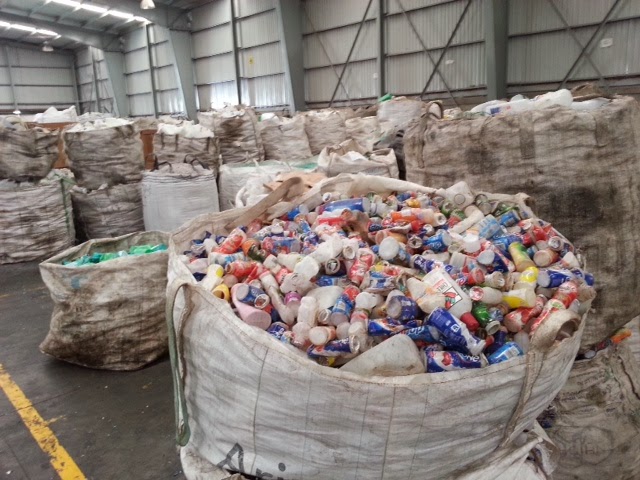Estudio de caso: Tapas de alcantarillas en Celaya
Palabras y Fotos por Michele PerezEl Problema
La ciudad de Celaya, Gto. en México, con una población cercana a los 500,000 habitantes,
sufría de un problema con sus tapas de alcantarillas y rejas de
alcantarillado — se las estaban robando por el valor de su hierro. La
ciudad necesitaba encontrar una solución creativa para reducir, o
eliminar, el robo de estas piezas de hierro.
Durante
el 2013 desaparecieron aproximadamente 100 tapas de alcantarillas y 647
rejas de alcantarillado. El costo para reponerlas, incluyendo
materiales y mano de obra, esta entre los $1,300 y 1,700 MXN ($99-120
USD a tipos de cambio corrientes)
por cada tapa de hierro y $430 MXN ($32 USD) por cada reja. En total,
la ciudad gastó aproximadamente $428,210 MXN ($32,686 USD or €23,720
EUR) en reemplazarlas en el 2013. La ciudad probó reemplazar las tapas
de hierro con tapas de concreto, pero esas se rompían muy facilmente.
Para una ciudad en rápido crecimiento como Celaya, estos robos no eran
solo una molestia sino un gasto significativo tanto para el ayuntamiento
como sus ciudadanos contribuyentes, y era necesario encontrar una mejor
solución.
La Solución
Ya
que la cultura del reciclaje no está arraigada en los hogares
Celayenses, la ciudad implementó un sistema de separación de materiales
reciclables y reusables en el basurero municipal. Usando máquinas y
obreros, se separan telas, vidrio, cartón, aluminio y plástico de las
más de 300 toneladas de basura que se colectan diariamente en la ciudad.
Después haber sido separados, los materiales son compactados y
vendidos. Adicionalmente, el biogás que genera la basura en
descomposición, es capturado y transformado en energía eléctrica. Ambas
iniciativas son parte del programa nacional “Campo Limpio” el cual fomenta la reducción, el reciclaje y el reuso (upcycle) de la basura.
Los plásticos son después llevados a la Recicladora de Plásticos de Celaya
para su reuso. Ahí, el polietileno es separado del resto de los
plásticos y agrupado por color, para después pasar por un molino que lo
reduce a unos pequeños cuadros de aproximadamente una pulgada de ancho;
más adelante, una máquina los limpia y remueve todo tipo de etiquetas.
Finalmente, los cuadros son empujadas por un segundo molino que los
convierte en bolitas que parecen confeti negro o gris.
Estas
bolitas son derretidas en moldes para crear productos nuevos como
tablas de "madera" de varios tamaños para armar bancos, pequeñas
unidades de almacenamiento e incluso baños portátiles. En realidad,
estas bolitas pueden tomar cualquier forma según el diseño del molde,
así que, cuando el alcalde mencionó que la ciudad necesitaba reemplazar
las tapas de alcantarillas, el arquitecto/diseñador de la planta le
ofreció una solución en base a este proceso de reciclaje y reuso. Cada
tapa de alcantarilla de plástico cuesta $800 MXN ($61 USD), un ahorro de
$500 a 900 MXN ($38-69 USD) por pieza en comparación a su contraparte
de hierro. Si hubiera necesidad de reemplazar las 19,000 tapas de
alcantarillas en la ciudad, el ayuntamiento se ahorraría un mínimo de
$9.5 millones MXN ($722,000 USD) al usar las nuevas tapas de plástico –
una cantidad muy considerable.
Las
tapas y rejas de plástico son el reemplazo ideal para el clima
semi-desértico de Celaya y actualmente se han instalado en varias
secciones de la ciudad donde se están haciendo mejoras municipales. A la
fecha, ninguna de las tapas de plástico ha sido robada y la ciudad se
ha ahorrado tanto costos financieros como del medio ambiente. Este es un
claro ejemplo de como la basura de la ciudad ha sido reciclada y
reutilizada para el beneficio de sus residentes.
*Todos los detalles fueron obtenidos por medio de entrevistas en persona y correspondencia con la oficina del Alcalde de la Ciudad de Celaya, Ismael Pérez Ordaz, y las oficinas de la Recicladora de Plásticos de Celaya.
 |
| Tapa de alcantarillas |
 |
| Bolsas de plasticos |
 |
| Bolitas de plastico |



